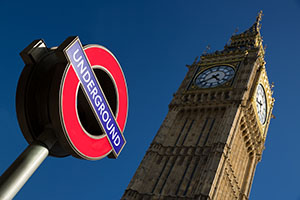 Despite the sweeping generalization peddled by the mainstream media (that 800K government workers and civil servants are not getting paid), due to the various anomalies within the USA government, as to how and why certain employees are paid, ensures that not all government workers are ‘enjoying’ a few days unpaid forced leave…
Despite the sweeping generalization peddled by the mainstream media (that 800K government workers and civil servants are not getting paid), due to the various anomalies within the USA government, as to how and why certain employees are paid, ensures that not all government workers are ‘enjoying’ a few days unpaid forced leave…
As we noted earlier in the week the Obama administration moved quickly, as did Congress, to ensure that all armed personnel would be paid for the duration of the impasse, having the army on your side if the impasse drags on much further obviously makes a lot of sense. So let’s take a quick look at some of the departments who will and won’t get paid during the stalemate right at the heart of the USA government Numbers of laid off employees varies dramatically from agency to agency. The Agriculture Department is laying off 84 percent of its staff, whilst the Veterans Affairs Department is keeping 96 percent of its workers on the job.
[unordered_list style=”green-dot”]
- 3000 safety inspectors at the Federal Aviation Administration are off the job.
- The Food and Drug Administration is still reviewing new pharmaceuticals.
- The National Institute of Health is turning away new patients for clinical trials.
- Passport applications are paid for by fees.
- The U.S. Patent and Trademark Office, can operate for at least four weeks.
- Federal Highway Administration is funded by taxes on gasoline and diesel fuel, its 2,914 employees are still on the job.
- The Andrews Air Force Base golf course, funded through user fees is open.
[/unordered_list]
US Treasury Secretary Jack Lew has delivered a message to America’s politicians to reach a deal to raise the debt ceiling swiftly.
[quote]”It might be hard to believe, but there is a dangerous debate underway in Congress right now over whether the United States, the world’s strongest economy, should pay all of its bills. The United States cannot be put in a position of having to choose which commitments it should meet. How could we possibly decide among supporting our veterans, maintaining food assistance for children in need, or sending Medicare payments to hospitals?”[/quote]
Market snapshot at 10:00 am UK time
Japan’s Nikkei index falls to a one-month low as investors are concerned over the USA government shutdown. The main index in Japan has shed circa 5% this week due to fears that the USA government shutdown will not find the quick solution so many had predicted at the start of the week. The index closed down 0.94% in the overnight Asian session. The Hang Seng closed down 0.33%, whilst the CSI moved up 0.59% on the day.
Commodities have enjoyed modest gains in the morning trading session; ICE WTI oil is up 0.25% at $103.57 per barrel, NYMEX natural is up 0.31% at $3.51 per therm. COMEX gold is down marginally at $1317.10 per ounce, with silver down 0.44% on COMEX at $21.69 per ounce.
Equity indices in Europe are mixed, but sentiment appears unconfirmed as once again markets await the New York open in the anticipation that the USA government deadlock will be broken; the STOXX index is up 0.14, FTSE down 0.17%, CAC up 0.17%, DAX down 0.14%, the Athens exchange has once again broken the mould, up 2.04% in the morning session.
Looking towards the New York open and the equity index futures the DJIA equity index future is up 0.11%, SPX up 0.17% and NASDAQ up 0.21%, however, that cautious optimism could be reversed shortly after opening if once again very little progress is made regarding the partial government shutdown.
Forex focus
The Aussie added 0.6 percent to 94.46 U.S. cents late in the Sydney session, after touching 94.48 cents, the strongest level seen since Sept 23rd. It’s up 1.4 percent this week. New Zealand’s currency gained 0.3 percent to 83.19 U.S. cents from yesterday and has climbed 0.6 percent since Sept 27th. It weakened 1.1 percent last week, the most since the period ended Aug 23rd. Australia’s dollar climbed to the strongest in almost two weeks as traders bets matched investor expectations that the RBA, the Reserve Bank of Australia, won’t cut borrowing costs this year, increasing demand for the currency.
The dollar weakened by 0.2 percent to 97.09 yen early in London, extending this week’s decline to 1.2 percent. The U.S. currency was little changed at $1.3626 per euro, having dropped 0.8 percent since Sept 27th. The yen gained 0.1 percent to 132.29 per euro.
Sterling dropped by 0.3 percent to $1.6115 early in the London session after rising to $1.6260 on Oct 1st, the highest level seen since Jan. 2nd. The U.K. currency weakened by 0.3 percent to 84.52 pence per euro, having fallen 0.9 percent this week. Sterling slid 0.7 percent this week, according to Bloomberg’s Correlation-Weighted Indices, cutting its six-month advance to 5.9 percent. The euro rose 0.3 percent this week, while the dollar weakened 0.5 percent. The pound fell for a second day versus the dollar, after reaching a nine-month high this week, due to speculation that the U.K. economic recovery isn’t strong enough to warrant an increase in borrowing costs.
Bonds
The benchmark 10-year gilt yield rose by three basis points, or 0.03 percentage point, to 2.71 percent after falling to 2.67 percent on Sept. 30th, the lowest since Aug 27th. The 2.25 percent bond due in September 2023 declined 0.23, or 2.30 pounds per 1,000-pound face amount, to 96.065.





